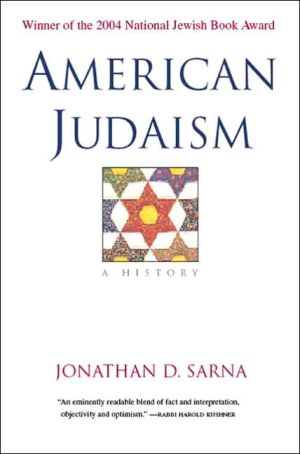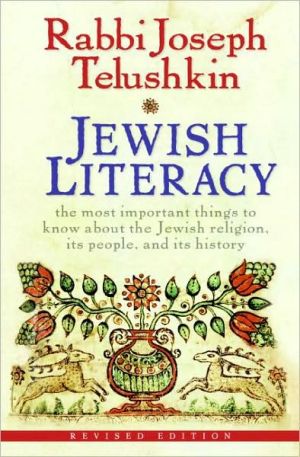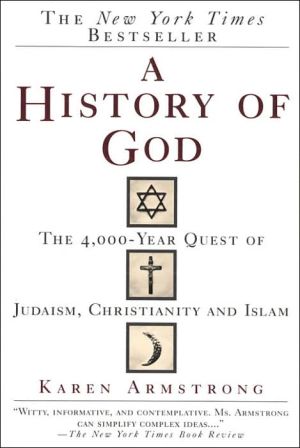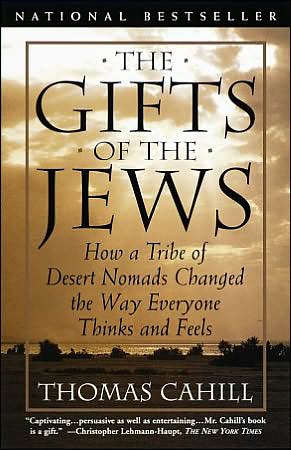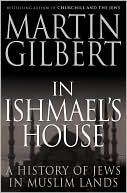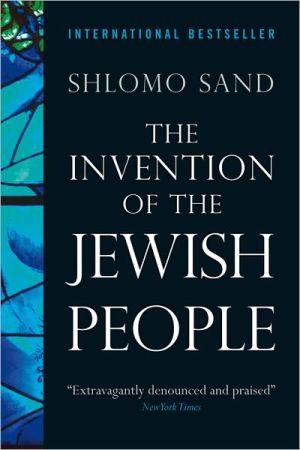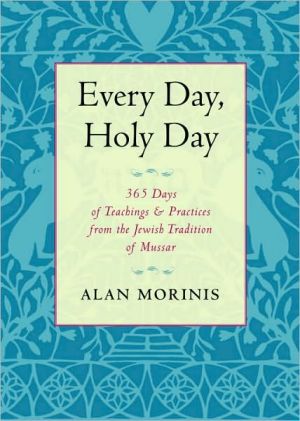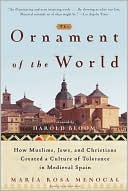American Judaism: A History
The first comprehensive history of American Judaism in over fifty years, this book is both a celebration of 350 years of Jewish life in America and essential reading for anyone interested in American religion and life. Jonathan Sarna, a preeminent scholar of American Judaism, tells the story of individuals struggling to remain Jewish while also becoming American. He offers a dynamic and timely history of assimilation and revitalization, of faith lost and faith regained.Tracing American...
Search in google:
"This work should emerge as the single best description of American Judaism during its 350 years on American soil. It will eclipse earlier work even as it sensitizes us to the shape that our religious life will take in the opening decades of the third millennium."—Michael Berenbaum, Director, Sigi Ziering Institute, The University of Judaism;"Jonathan Sarna's history of American Jewry is a wonderful read-and at the same time an informative and subtle analysis of the formation of something radically new in Jewish history: a diaspora community that is, for most of its members, not an exilic community."-Michael Walzer, Institute for Advanced Study, Princeton, New Jersey Author Biography: Jonathan Sarna is Joseph H. and Belle R. Braun Professor of American Jewish History at Brandeis University, and chairs the Academic Board of the Jacob Rader Marcus Center of the American Jewish Archives. Author or editor of more than twenty books on American Jewish history and life, he is also the chief historian of the National Museum of American Jewish History and of the 350th commemoration of Jewish life in America, 1654-2004. Publishers Weekly Such scholars as Howard M. Sachar, Henry L. Feingold and Jacob R. Marcus, among others, have produced complete histories of American Jewry. Sarna, a Brandeis University professor who has published on various aspects of American Jewish history, now joins the ranks of his distinguished predecessors. Marking the 350th anniversary of Jewish settlement in New Amsterdam (now New York), this outstanding survey emphasizes the religious history of Jews in America. Since it is difficult to disentangle religious history from the entire story of how Jews fared generally in the United States, the book provides a sweeping overview of the trials, tribulations and triumphs of American Jews from 1654 to the present. Sarna writes in sprightly prose, usefully presenting anecdotes about some unfamiliar people and events: for example, he introduces Rachel "Ray" Frank, an obscure late-19th-century "charismatic woman Jewish revivalist." Full attention is also paid to the great rabbinical leaders, the movements they led and the problems they encountered. Sarna's fact-filled presentation demonstrates that American Jews have always worried about intermarriage, assimilation and continuity. At various times, they have found answers in regeneration, revitalization and renewal. Concluding with a consideration of contemporary dilemmas, Sarna draws from history the possibility that "American Jews will find creative ways to maintain and revitalize American Judaism." (Apr.) Forecast: Sarna, one of the great deans of American Judaism and the chief historian of the National Museum of American Jewish History, will promote this book at many lectures this spring in cities such as New York, Saint Paul, Providence, Philadelphia, Cincinnati and Washington, D.C. Copyright 2004 Reed Business Information.
American Judaism \ A HISTORY \ \ By JONATHAN D. SARNA \ Yale University Press \ Copyright © 2004 Yale University\ All right reserved.\ ISBN: 978-0-300-10197-3 \ \ \ \ \ Chapter One \ Colonial Beginnings \ New Amsterdam, part of the remote Dutch colony of New Netherland in present-day New York State, was among the New World's most diverse and pluralistic towns. A French Jesuit missionary in 1643 reported that "eighteen different languages" were spoken by local inhabitants of different sects or nations. In addition to the legally protected Calvinist faith, he encountered Catholics, English Puritans, Lutherans, and Anabaptists. A large supplementary influx of dissenting Protestants (including Lutherans, Quakers, and Anabaptists) subsequently arrived from Europe. Then, on a late summer day in September 1654, a small French frigate named the Ste. Catherine sailed into the port. Most of the ship's passengers-"twenty-three souls, big and little"-were bedraggled Jewish refugees from Recife, Brazil. Having been expelled from Recife when the Portuguese recaptured the colony from the Dutch, they were now seeking a new home.\ The refugees were not the first Jews to arrive in North America. Back in 1585, a Jew named Joachim Gaunse served as the metallurgist and mining engineer for the ill-fated English colony on Roanoke Island. He conducted soil experiments in Carolina, returned to England a year later, and in 1589 was indicted as a Jew for blasphemy. Thereafter a small number of other Jews, mostly intrepid merchants bent on trade, made brief stops at American ports to conduct business. One of them, Solomon Franco, agent for a Dutch Jewish merchant, arrived in Boston in 1649. A "stranger" unable to post the necessary bond, he was duly warned out of town and sailed off as soon as he could. In 1654 itself, several Jews came to New Amsterdam from Holland and Germany, also presumably to trade. The "big and little" refugees from Recife, however, differed from the Jews who came before them. Though economically ruined, they sought to settle down and form a permanent Jewish community in North America, to "navigate and trade near and in New Netherland, and to live and reside there."\ By the time these Jewish refugees arrived, the clergy of the dominant Dutch Reformed Church already felt deeply agitated, fearing that their legal prerogatives as the colony's only recognized faith were being usurped. Peter Stuyvesant, the dictatorial director-general of New Netherland and himself an elder of the Reformed Church and the son of a minister, sympathized with them. His mission was to establish order among the citizenry, to combat "drinking to excess, quarreling, fighting and smiting." He sought to promote morality and social cohesion by enforcing Calvinist orthodoxy while rooting out nonconformity. When Lutherans petitioned for permission to call for a minister and organize a congregation, he was relieved that his superiors in Amsterdam turned them down. He forced them to worship in private; some were even subjected to fines and imprisonment.\ When the Jews arrived, Stuyvesant sought permission from Amsterdam to keep them out altogether. The Jews, he explained, were "deceitful," "very repugnant," and "hateful enemies and blasphemers of the name of Christ." He asked the directors of the Dutch West India Company to "require them in a friendly way to depart" lest they "infect and trouble this new colony." He warned in a subsequent letter that "giving them liberty we cannot refuse the Lutherans and Papists." Decisions made concerning the Jews, he understood, would serve as precedents and determine the colony's religious character forever after.\ Forced to choose between their economic interests and their religious sensibilities, the directors of the Dutch West India Company back in Amsterdam voted with their pocketbooks. They had received a carefully worded petition from the "merchants of the Portuguese [Jewish] Nation" in Amsterdam that listed a number of reasons why Jews in New Netherland should be permitted to stay there. One argument doubtless stood out among all the others: the fact that "many of the Jewish nation are principal shareholders." Responding to Stuyvesant, the directors noted this fact and referred as well to the "considerable loss" that Jews had sustained in Brazil. They ordered Stuyvesant to permit Jews to "travel," "trade," "live," and "remain" in New Netherland, "provided the poor among them shall not become a burden to the company or to the community, but be supported by their own nation." After several more petitions, Jews secured the right to trade throughout the colony, serve guard duty, and own real estate. They also won the right to worship in the privacy of their homes, which seems to have been more than the Lutherans were permitted to do.\ Just as Stuyvesant had feared, the economic considerations that underlay these decisions regarding the Jews soon determined policy for members of the colony's other minority faiths. "We doubt very much whether we can proceed against [these faiths] rigorously without diminishing the population and stopping immigration which must be favored at a so tender stage of the country's existence," the directors admonished in 1663 after Stuyvesant banished a Quaker from the colony and spoke out against "sectarians." "You may therefore shut your eyes, at least not force people's consciences, but allow every one to have his own belief, as long as he behaves quietly and legally, gives no offense to his neighbor and does not oppose the government."\ Expedience thus became the watchword in cosmopolitan New Amsterdam, though it stood in constant tension with the established Dutch church. The priority of economics proved fortunate for the refugee Jews and the small group of immigrants from Holland who joined them. They benefited from their ties to powerful merchants of the "Hebrew Nation" back in Amsterdam and drew sustenance from the struggles of other minority faiths in the colony whose efforts were linked to their own. New Amsterdam's Jews, like those of Trieste, Bordeaux, Amsterdam, London, and the Caribbean, were port Jews; they lived in societies that placed a premium on commerce and trade. This helps to explain the extraordinary privileges that they came to enjoy and the many "modern" features that distinguished their lives from those of the far more traditional Jews in Germany and Eastern Europe. Everywhere, the rights that port Jews battled hardest to obtain were civil and economic rights, not religious ones. Public worship, while desirable and available to Jews in cities like Recife and Amsterdam, was not, they knew, an absolute religious requirement. Granted the right to settle and trade openly, the Jews of New Amsterdam conceded to worship in private, just as enterprising religious dissenters did throughout Early Modern Europe.\ REFUGEES FROM THE INQUISITION\ The seeds of Judaism sown in mid-seventeenth-century colonial America fell from plants nurtured in the soil of the Iberian peninsula. There Jews had lived for more than a thousand years, climaxing in the Golden Age of the eleventh and twelfth centuries, an era characterized by unparalleled Muslim-Jewish symbiosis. With the Christian reconquest of Spain, however, reaction and repression set in, and by the late fourteenth century conditions for Jews had precipitously deteriorated. Hundreds were massacred in anti-Jewish rioting in 1391 and 1412-14, and thousands at that time converted to Catholicism: some forcibly, some voluntarily, some out of conviction, and some simply to avoid a grisly death. All of these converts, known as conversos, were forbidden by church law from ever returning to Judaism. Consequently, a number-how many is disputed-began to practice their ancestral faith in secret, abetted by Jews, often their own relatives, who remained unconverted. The Holy Inquisition, introduced in Spain in 1481, attempted to root out such Crypto-Judaism, charging its adherents (whom they derisively labeled marranos, meaning "swine") with "Judaizing," a form of heresy. Inquisitors employed torture to wring confessions from those alleged to have practiced Judaism in secret, and they burned hundreds at the stake. In 1492, in an effort to sever lines of communication between conversos and Jews, Spain's King Ferdinand and Queen Isabella expelled "all Jews and Jewesses of whatever age they may be" from their "kingdoms and seignories," warning them never to return "as dwellers, nor as travelers, nor in any other manner whatsoever." Just as Christopher Columbus went sailing off to the new world in the summer of 1492, Jewish life in Spain officially ended.\ Five years later, when the royal families of Spain and Portugal were united in marriage, refugees who thought they had found haven in Portugal, along with that country's native Jews, faced expulsion again. This time, however, they were forcibly baptized en masse and then forbidden to emigrate for many years in order to protect the state from economic losses. With its leadership intact, Judaism in Portugal fled underground. And there it survived, albeit in mutilated form, passed clandestinely from one generation to the next. From the inside, it was protected by pious women and men who sanctified domestic time and space in ways that recalled the Judaism of their past-through rituals such as lighting candles on Friday night, cleaning house at Passover time, and fasting on the Day of Atonement. From the outside, it was reinforced by ties of kinship, as well as by "Judaizers" who risked their lives to exhort their fellow "New Christians" to keep the embers of Judaism from burning out.\ Crypto-Jews took their faith with them when they crossed the ocean to Spanish and Portuguese colonies in the new world. There, far from the clutches of the Inquisition, they thought it would be easier to reconcile the public Catholic and private Jewish aspects of their lives, and to prosper. As so often before, however, the initial success that they achieved proved fleeting. Beginning in 1569, the Holy Inquisition pursued "Judaizing heretics" -real and imagined-into the new world. Fear, repression, torture, and death followed in the Inquisitors' wake.\ Wherever they lived, Jews who traced their roots to the Iberian peninsula came to be known as Sephardic Jews, or Sephardim, from the biblical name Sepharad (Obadiah 1:20), which they understood to mean Spain. They distinguished themselves from the Jews of the Germanic lands, known as Ashkenazic Jews or Ashkenazim, based on the biblical name Ashkenaz (Jeremiah 51:27), associated with Germany. Sephardim developed many distinct rites, practices, traditions, and foodways, and the language of their faith, including words for sacred objects and occasions, appropriated Spanish and Portuguese terms. Culturally, too, Sephardim stood apart from their northern coreligionists. Because there were no ghettos in Spain or Portugal, Sephardim had lived among non-Jews, absorbing Iberian values and learning to appreciate secular knowledge. Yet their collective consciousness had also been seared by memories of cruel expulsions and Inquisitional terror. These experiences shaped the worldview of the Sephardim, underscoring the instability of diaspora life and the fragility of worldly success.\ Sephardic Crypto-Jews, forced converts who were outwardly Christian but inwardly Jewish, along with those who escaped Iberia from the fifteenth century onward in order to resume the open practice of Judaism under more favorable regimes, identified as members of a somewhat vaguely defined "Portuguese Jewish Nation." This nation, something of an imagined community, was nevertheless rooted in a common place and culture. Tangled webs of association and kinship, common memories of persecution, and a shared devotion to the maintenance of the Sephardic heritage and tradition bound its members together. Embracing practicing Christians of Jewish origin, as well as strict Jews, the nation emphasized the tribal aspects of Judaism, ties of blood and peoplehood; religion remained a secondary element in this collective identity. The seismic questions posed by this separation of religion from ethnicity-questions concerning the authority of religion in Jewish life, the definition and boundaries of Judaism, and whether Judaism, like post-Reformation Christianity, could be practiced in a multiplicity of ways-would continue to rattle Jews throughout the modern period.\ Amsterdam is where these questions first came to the fore. The young Calvinist republic of the Netherlands, newly independent of Spain and bitterly antagonistic toward the Holy Inquisition, emerged as a vibrant center of world trade in the seventeenth century and became a magnet for Crypto-Jews seeking economic opportunity in a more tolerant religious environment. By the first third of the seventeenth century, synagogues, a Jewish school, and Jewish printing houses had opened in Amsterdam, where most Jews settled. Those who had previously practiced Jewish rituals underground were now able to embrace their ancestral faith openly and to resume living as Jews in the sunlight. But conflicts concerning Jewish religious authority, intellectual and spiritual freedom, and the relationship between practicing Jews and those who still preferred to keep their Jewish ancestry secret plagued the Jewish community. In some cases, they resulted in painful excommunications, such as that of the philosopher Baruch Spinoza in 1656. Economically, meanwhile, the community expanded and thrived. As early as the 1630s, one study shows, Jews of Iberian descent were responsible for as much as 8 percent of the Dutch Republic's total foreign trade.\ In 1630, when Holland captured the colony of Pernambuco in Brazil from the Portuguese (aided, it was alleged, by local Crypto-Jews seeking revenge on their former persecutors), Jewish communal life on the Amsterdam model became possible for the first time in the new world. The Dutch West India Company, which governed the colony as a profit-making venture for its investors, sought to attract enterprising Jews to its new dominion. The company had learned to value Jewish merchants as stimulators of industry and trade-not to mention that Jews already spoke the local language (Portuguese) and were connected through ties of kinship and trade with Portuguese conversos who had settled there. In secret instructions, the West India Company explicitly ordered the chief of its expedition to grant Jews liberty on a par with Roman Catholics: "No one will be permitted to molest them or subject them to inquiries in matters of conscience or in their private homes."\ Recognizing the region's great economic potential, Jews flocked to Pernambuco, establishing in the city of Recife and its environs a community that, at its peak in the 1640s, amounted to between 1,000 and 1,450 Jews-between a third and a half of Dutch Brazil's total civilian white population. The community included ordained rabbis, an active synagogue, and two Jewish schools-more than any North American Jewish community would be able to claim for another two hundred years. Most significantly, the Jews of Dutch Brazil enjoyed rights unmatched by any other seventeenth-century Jewish community in the world. "Treat and cause to be treated the Jewish nation on a basis of equality with all other residents and subjects in all treaties, negotiations and actions in and out of war without discrimination," the States General of the United Netherlands ordered, seeking to encourage Jewish settlement and trade. With Portugal bidding to recapture Dutch Brazil, this kind of guarantee may also have been necessary to prevent nervous Jews from moving away. As it was, some six hundred Jews remained in Recife when Portuguese troops recaptured the province on January 26, 1654. Jews as well as Protestants lost everything they had with Holland's defeat, and the Portuguese gave them just three months to leave.\ Those Jews who could find safe passage set sail for Amsterdam. There they asked Dutch officials for protection and begged assistance from the city's well-organized community of Jews. Other refugees searched for new world havens, particularly in the Caribbean. By April 26, 1654, all openly professing Jews had left Brazil.\ (Continues...)\ \ \ \ \ Excerpted from American Judaism by JONATHAN D. SARNA Copyright © 2004 by Yale University. Excerpted by permission.\ All rights reserved. No part of this excerpt may be reproduced or reprinted without permission in writing from the publisher.\ Excerpts are provided by Dial-A-Book Inc. solely for the personal use of visitors to this web site. \ \
AcknowledgmentsIntroduction1Colonial Beginnings12The Revolution in American Judaism313Union and Disunion624Two Worlds of American Judaism1355An Anxious Subculture2086Renewal272Conclusion: American Judaism at a Crossroads356AppAmerican Jewish Population Estimates, 1660-2000375List of Abbreviations377Notes379Glossary423Critical Dates in the History of American Judaism429Selected Bibliography441Index466
\ Publishers WeeklySuch scholars as Howard M. Sachar, Henry L. Feingold and Jacob R. Marcus, among others, have produced complete histories of American Jewry. Sarna, a Brandeis University professor who has published on various aspects of American Jewish history, now joins the ranks of his distinguished predecessors. Marking the 350th anniversary of Jewish settlement in New Amsterdam (now New York), this outstanding survey emphasizes the religious history of Jews in America. Since it is difficult to disentangle religious history from the entire story of how Jews fared generally in the United States, the book provides a sweeping overview of the trials, tribulations and triumphs of American Jews from 1654 to the present. Sarna writes in sprightly prose, usefully presenting anecdotes about some unfamiliar people and events: for example, he introduces Rachel "Ray" Frank, an obscure late-19th-century "charismatic woman Jewish revivalist." Full attention is also paid to the great rabbinical leaders, the movements they led and the problems they encountered. Sarna's fact-filled presentation demonstrates that American Jews have always worried about intermarriage, assimilation and continuity. At various times, they have found answers in regeneration, revitalization and renewal. Concluding with a consideration of contemporary dilemmas, Sarna draws from history the possibility that "American Jews will find creative ways to maintain and revitalize American Judaism." (Apr.) Forecast: Sarna, one of the great deans of American Judaism and the chief historian of the National Museum of American Jewish History, will promote this book at many lectures this spring in cities such as New York, Saint Paul, Providence, Philadelphia, Cincinnati and Washington, D.C. Copyright 2004 Reed Business Information.\ \
